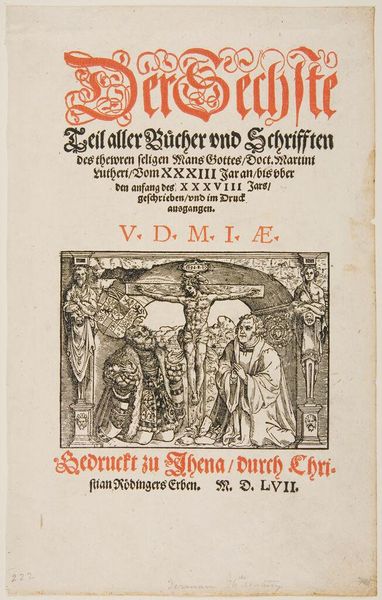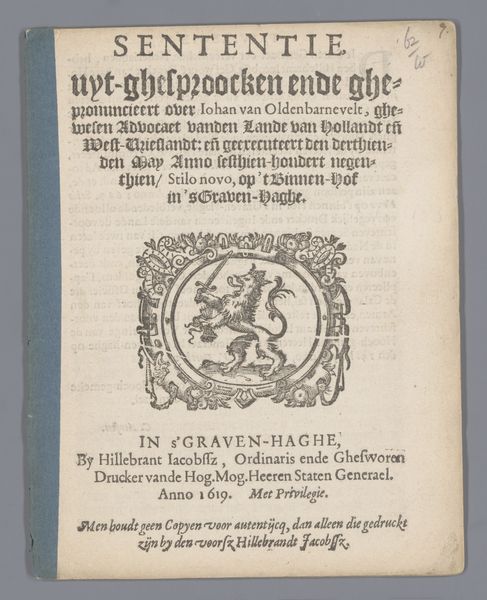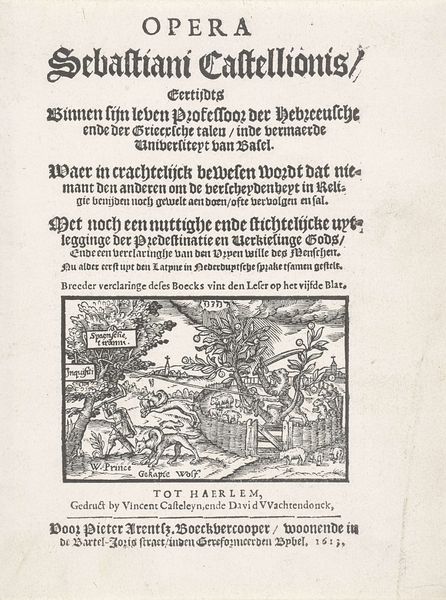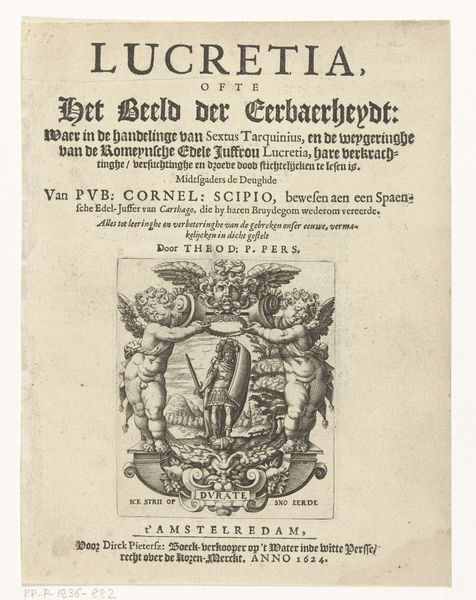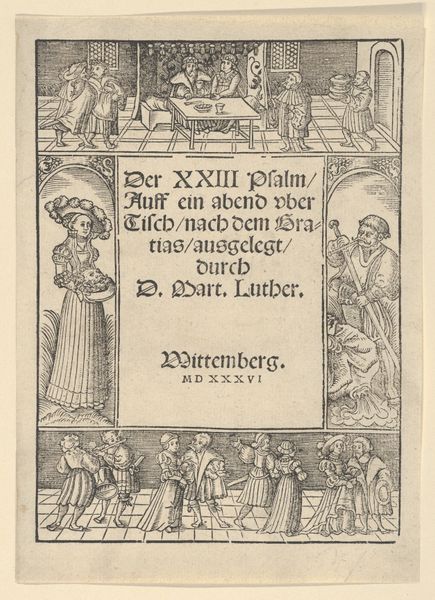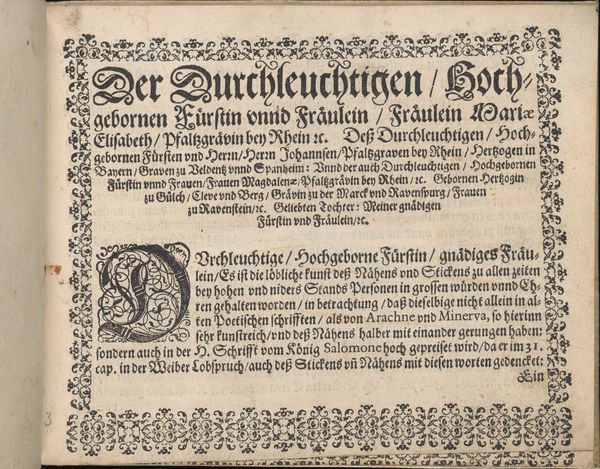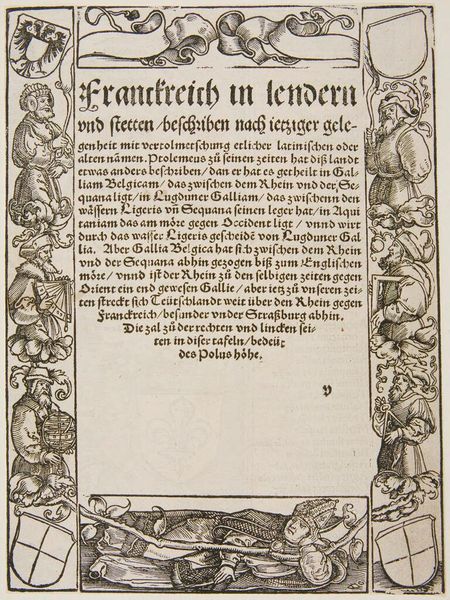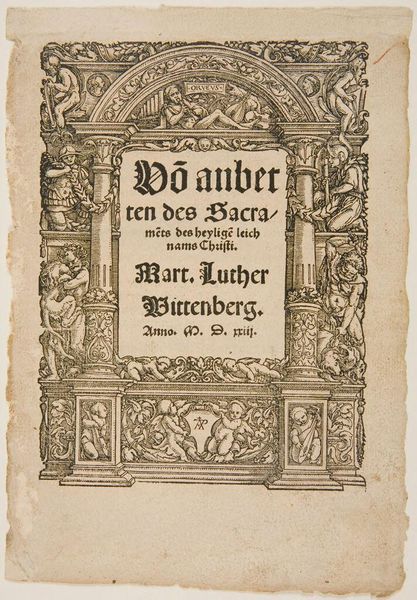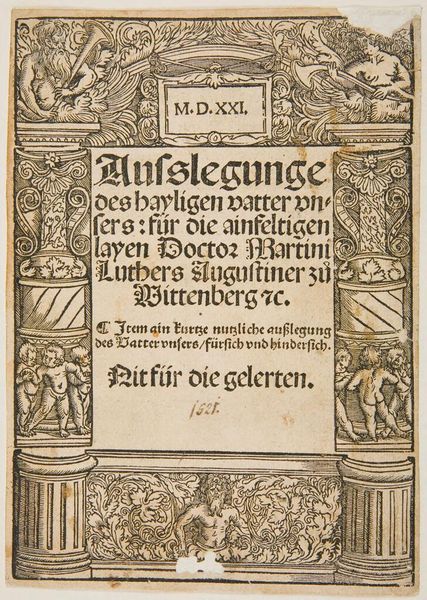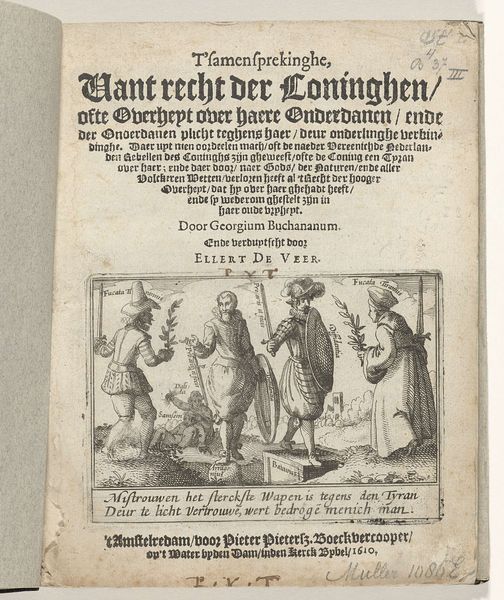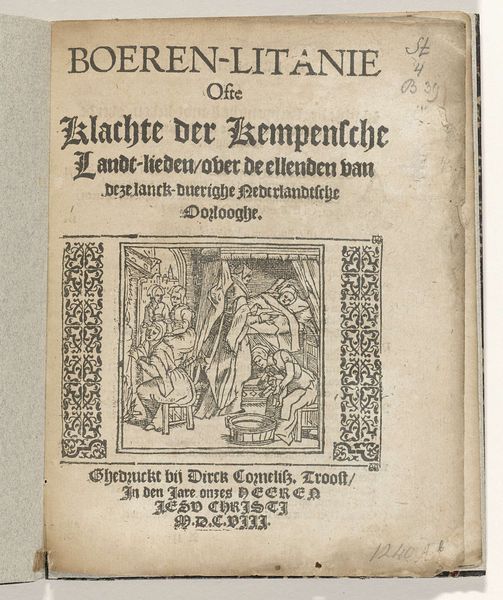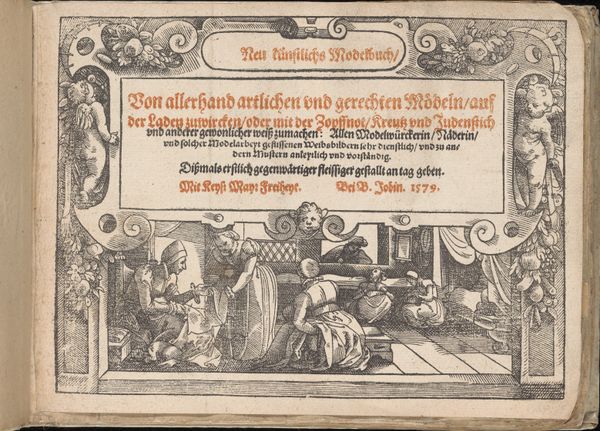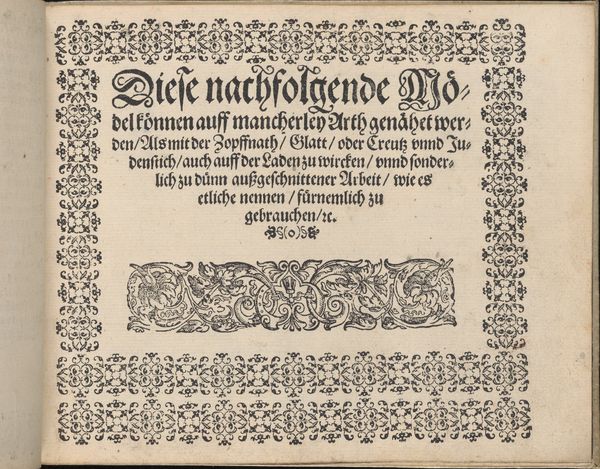
Titelvignet voor: Ireneus Philaletius, Querela ecclesiae. Oft Clachte der kercke aende overheden des landts, 1617 1617
0:00
0:00
print, typography, engraving
# print
#
old engraving style
#
typography
#
history-painting
#
northern-renaissance
#
engraving
Dimensions: height 184 mm, width 131 mm
Copyright: Rijks Museum: Open Domain
Curator: Look at this intriguing title page from 1617, "Titelvignet voor: Ireneus Philaletius, Querela ecclesiae. Oft Clachte der kercke aende overheden des landts". It’s an engraving by Philips Serwouters. What stands out to you immediately? Editor: The darkness! The lines are dense and create this feeling of weighty somberness. And that central image… very stark. Curator: Indeed. The northern Renaissance style is quite pronounced here, evident in the meticulous detail of the typography and the central illustrative vignette. The text describes the church's lament to the land's authorities concerning their grievous transgressions, so the engraving really leans into history-painting. Editor: So the complaint itself is being visually represented through the figures. Considering Serwouters would've had to carefully etch the copper plate to achieve this, it speaks volumes about the value placed on printed material for disseminating this specific criticism and how labor relates to artistic craft.. Is the social commentary then reinforced by this production? Curator: Absolutely, the production underscores the message. Note how Serwouters employed light and shadow. Look closely at the textures, achieved purely through the engraver’s art—hatching and cross-hatching that bring a tangible feel to figures lamenting the Church. There's so much dramatic emotion being conveyed! Editor: I see the symbolic value through the light and darkness too; It reinforces a powerful visual narrative of grievance. But let's shift back to that labor you described earlier, especially if there are ideological functions in both creating and disseminating it. Curator: That’s the brilliance of the piece— the layers. Aesthetically refined, technically skilled, yet grounded in the gritty reality of religious and political discourse of the period. Editor: It truly encapsulates how form, materials, and historical context meld in powerful ways. It makes you contemplate how that shapes interpretation now. Curator: It does. Seeing the blend of artistic technique and social critique allows you to recognize that artistic value comes with an added understanding of the culture surrounding it.
Comments
No comments
Be the first to comment and join the conversation on the ultimate creative platform.
